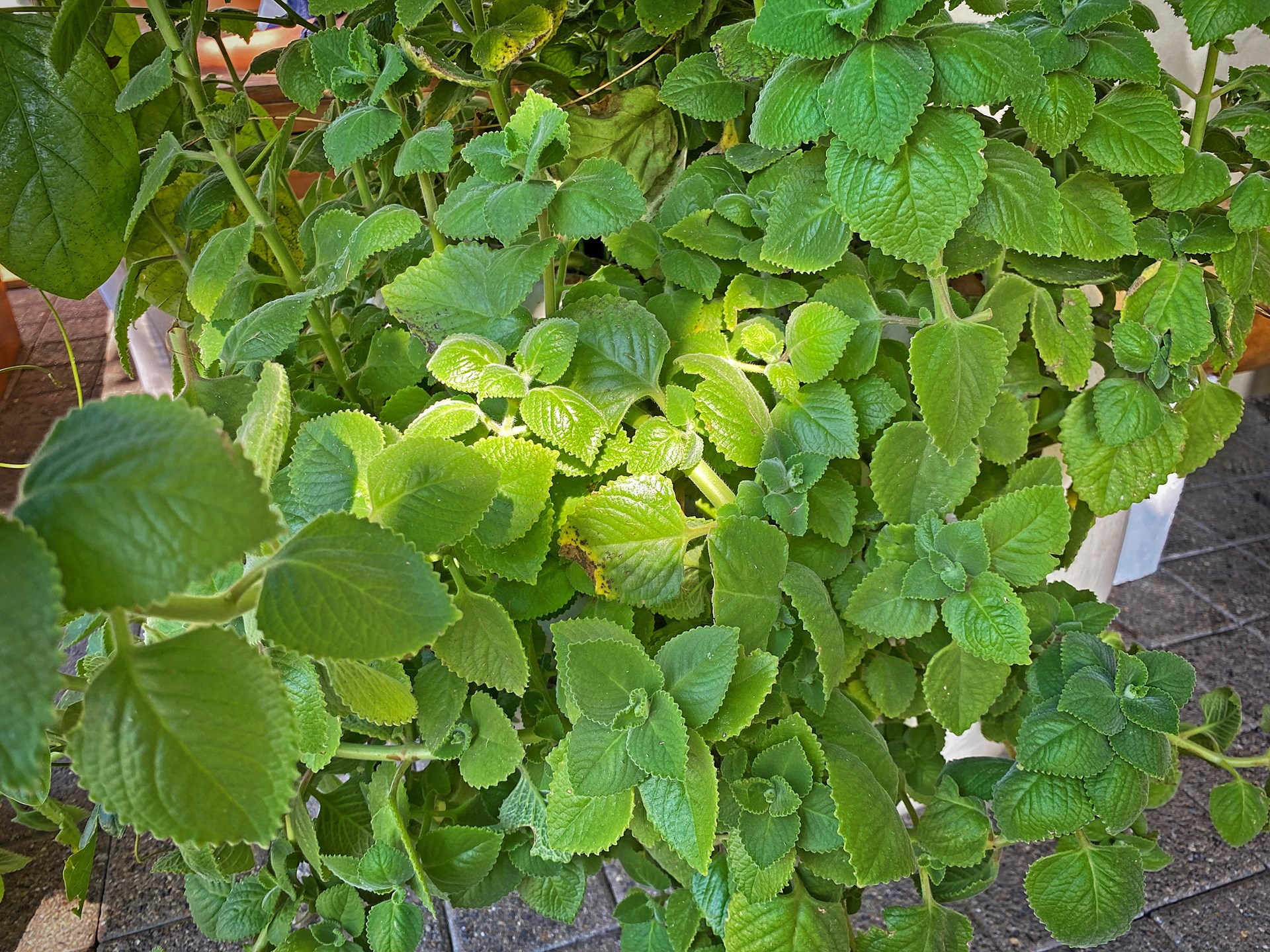

While most plants get their common names from their appearance or their uses, Cuban oregano, which is also commonly called Mexican mint, is neither oregano nor mint.
It does, however, belong to the mint family, Lamiaceae, which is identifiable most times by its pronounced square stems. Its Latin name, Coleus amboinicus, is yet another hint at its ancestry since the genus Coleus is known to have recognisably square stems. The specific epithet, amboinicus is thought to come from exploration on Ambon Island in Indonesia.
Native to parts of Africa, Cuban oregano is referenced in historical accounts as being traded across the Arabian Peninsula and into India, where it is known commonly as Indian borage.
It is a favoured plant in the tropics and subtropics where it is exposed to humid conditions and plenty of full sun. Performing best in well drained soils, it will be happy in a pot or in the ground and is quite drought tolerant once established.
Cuban oregano has a fleshy, almost succulent appearance and the leaves are soft to the touch due to the covering of short/soft hairs. This characteristic is known as tomentose in horticultural terminology.
Growing up to 3 feet tall, with a similar spread, it is grown as a perennial in the tropics for its unusual texture and array of uses — rather than for its insignificant flowers.
When crushed, it emits a strong odour that is reminiscent of oregano. It tastes like oregano, too, which is likely where the common name originated. This makes it popular for a host of culinary applications such as seasoning for meats and fish. It makes a great pesto or chutney, and the leaves can even be made into fritters. It pairs well with other herbs and vegetables used to bring out the flavours of other foods and is often used in making Cuban black beans.
Aside from its culinary uses, it also has several medicinal uses, and is said to be good for malaria, insect bites and treating coughs/colds. As with any medicinal utilisation, it is imperative to research prior to use.
Cuban oregano is easy to grow from seed or cuttings and it is a great plant to add to any collection. Some research suggests it has properties that deter mosquitoes, yet another reason to add this plant to your landscape.
In Camana Bay, Cuban oregano/Mexican mint can be found growing in a pot outside of Jessie’s Juice Bar.
This article was originally published in the January 2022 print edition of Camana Bay Times.

About the author
Shannon Schmidt is operations and horticulture services manager at Dart’s Arboretum Services Ltd. Joining Dart in 2012, Shannon previously worked in parks, public gardens and tourism properties, among others. Originally from the Finger Lakes region of New York State, Shannon loves island life, spending time paddleboarding around the canals and mangroves, freediving in the sea and spending time outdoors with her two energetic Boston Terriers Nollie and Ebbie and her equally energetic partner Chase! Shannon holds a Bachelor of Science in Recreation, Park and Tourism Management from The Pennsylvania State University and a Diploma in Horticulture from the Longwood Gardens Professional School of Horticulture.